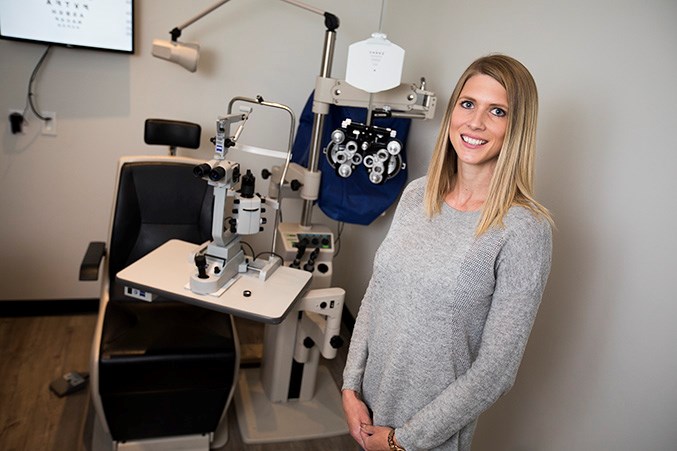Books and pencils may be an important part of starting the school year off right, but checking out young students’ eye health should also be a priority. According to Dr. Nikki Umscheid, an optometrist at Eyes 360 in Okotoks, close to 80 per cent of a child’s learning is based on his or her vision. Unfortunately, it’s sometimes difficult to determine whether a child has a sight issue, she said. In fact, one of every four school-age children have a vision problem and though parents think they would know if their child was struggling to see, that’s not always the case, she said. “It’s often difficult to determine if a kid has a vision problem because sometimes the problem is only in one eye,” said Umscheid. “And a lot of kids, even if they’re having problems in both eyes, don’t complain about it because they don’t know any different. They think everyone sees the way they see.” Most vision problems experienced by children can be treated early, she said. That’s why Alberta Health Services recommends bringing young children in at six months of age, then again at three years, then annually once they start kindergarten, she said. At six months, an optometrist can see whether the eyes are aligned properly and if they’re not working together, she said. The eyes can also be checked for health problems like congenital cataracts. Without those early visits to the optometrist, issues may be missed and if they go undiagnosed for too long it can become a problem in school, she said. “They can easily fall behind,” said Umscheid. “It can delay their development, it can make their learning and their co-ordination for physical activity difficult.” It can manifest in symptoms that are common to ADHD, dyslexia or speech issues, she said. About 60 per cent of children who experience difficulty reading have an undiagnosed or untreated vision problem, she said. She said a lot of children come in around ages eight to 10 and their sight is so bad she doesn’t know how they’ve made it through their first three or four years of school. Sometimes the hard part of identifying a sight problem is that children can adapt easily, she said. “They might memorize things, they hold things closer,” said Umscheid. “Some kids have little things, like they turn their head, or they squint or blink, and parents will catch on to that but not all the time.” There are vision screening tests in some schools, but Umscheid said they don’t quite do the trick because they have high error rates. Nearly half of students with vision problems can still pass the test, she said. It’s always best to bring children to an optometrist for a full check-up that includes thorough examination of eye health as well as sight, she said. The exams are free for all children in Alberta up to age 19, she said, and the recommendation is to see an optometrist every 12 months. For young students starting kindergarten, the Alberta Association of Optometrists offers the Eye See Eye Learn program, which will provide a pair of glasses for free if an optometrist’s exam deems them necessary, she said. Last year more than 2,000 kindergarten students received free glasses through Eye See Eye Learn, and it was the first pair for about 65 per cent of them, she said. “The reason they have that program is just to ensure that eye health and vision problems aren’t preventing children from reaching their full learning potential, because vision is so closely tied in to learning and how well you do in school,” said Umscheid.




.png;w=120;h=80;mode=crop)